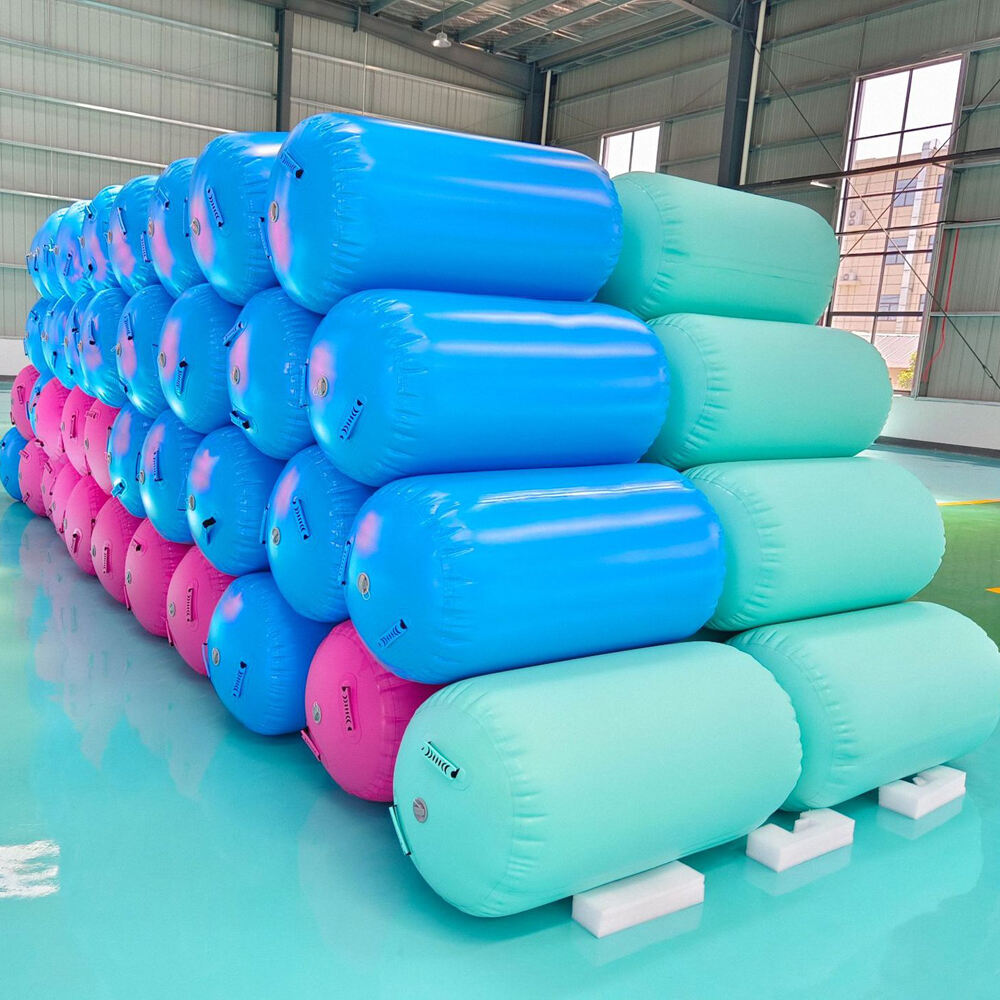Maximizing Safety in Modern Gymnastics Training
The evolution of gymnastics training equipment has taken a significant leap forward with the introduction of air tracks, revolutionizing how athletes practice their skills while minimizing injury risks. These innovative training surfaces combine the perfect balance of stability and cushioning, allowing gymnasts to train harder and longer while maintaining optimal safety standards. As more gymnastics facilities adopt air tracks into their training programs, coaches and athletes alike are discovering the remarkable benefits these versatile surfaces provide.
The Science Behind Air Track Safety Features
Advanced Impact Absorption Technology
At the core of an air track's safety benefits lies its sophisticated impact absorption system. Unlike traditional gymnastics mats, air tracks utilize adjustable air pressure technology that can be customized to match different skill levels and training requirements. This dynamic response system helps distribute impact forces evenly across the surface, significantly reducing the stress on an athlete's joints and muscles during landings.
The unique construction of air tracks incorporates thousands of interwoven threads that connect the top and bottom surfaces, creating a consistent rebound effect. This design ensures that gymnasts experience optimal support regardless of where they land on the surface, minimizing the risk of awkward landings that often lead to injuries.
Pressure Customization Benefits
One of the most valuable features of an air track is its adjustable pressure settings. Coaches can modify the firmness of the surface to accommodate different skill progressions and athlete comfort levels. For beginners, a softer setting provides extra cushioning during basic skill development, while advanced gymnasts can train with firmer settings that more closely simulate competition surfaces.
The ability to fine-tune the air pressure also allows for progressive skill development, as athletes can gradually transition to firmer settings as they build confidence and perfect their techniques. This customization capability is particularly beneficial in reducing the psychological barriers that often contribute to training-related injuries.
Enhanced Landing Mechanics and Injury Prevention
Proper Body Alignment Training
Air tracks play a crucial role in developing proper landing mechanics from an early stage. The responsive surface provides immediate feedback to gymnasts about their body position and weight distribution during landings. This feedback helps athletes naturally adjust their technique to maintain optimal alignment, reducing the risk of common injuries associated with poor landing form.
The consistent surface response of an air track allows gymnasts to focus on perfecting their body positions without fear of harsh impacts. This confidence-building aspect is especially important when working on new skills or returning to training after an injury.
Impact Force Distribution
Traditional training surfaces often create pressure points during landings that can lead to stress injuries over time. Air tracks excel at distributing impact forces more evenly across the entire surface, significantly reducing the risk of overuse injuries. This distribution is particularly beneficial for repetitive training sequences that would typically place excessive strain on specific body parts.
The superior force distribution properties of air tracks make them especially valuable for high-impact skills and combinations. Athletes can practice these demanding elements with reduced risk of acute injuries while still maintaining the technical precision required for competition success.

Versatility in Skill Progression
Multi-Skill Training Applications
Air tracks support a wide range of gymnastics skills, from basic tumbling to advanced acrobatic sequences. The versatile nature of these training surfaces allows coaches to design comprehensive training programs that develop multiple skill sets simultaneously. This versatility not only improves training efficiency but also helps prevent injuries that can occur when transitioning between different apparatus types.
The portable nature of air tracks means they can be easily incorporated into various training stations, allowing for creative skill combinations and progression drills. This flexibility helps maintain athlete engagement while ensuring proper skill development paths are followed.
Progressive Skill Development
The adjustable nature of air tracks enables coaches to implement systematic skill progression programs that prioritize safety. Athletes can master fundamental movements with appropriate support before advancing to more challenging variations. This methodical approach helps build a strong foundation of proper technique, reducing the likelihood of injury as skills become more complex.
Coaches can create specialized drills that break down advanced skills into manageable components, allowing athletes to build confidence and body awareness gradually. This progressive approach is essential for long-term injury prevention and sustainable skill development.
Recovery and Rehabilitation Benefits
Safe Return to Training
Air tracks prove invaluable in rehabilitation scenarios, providing a gentle yet supportive surface for athletes returning from injury. The adjustable pressure settings allow for graduated increases in training intensity, helping gymnasts rebuild strength and confidence at an appropriate pace. This controlled environment is crucial for preventing re-injury during the recovery process.
The forgiving nature of air tracks helps athletes maintain their skill level during recovery periods while minimizing the risk of setbacks. Coaches can modify drills and progressions to accommodate various stages of healing while keeping athletes engaged in meaningful training activities.
Injury Prevention Maintenance
Regular training on air tracks can serve as a preventive measure against future injuries. The reduced impact stress allows athletes to maintain their skills and conditioning while giving their bodies adequate recovery time between high-intensity training sessions. This balance is essential for long-term athlete development and injury prevention.
Air tracks also provide an excellent platform for implementing specific injury prevention exercises and drills. Coaches can incorporate proprioception training and stability work into regular practice sessions, helping athletes develop the body awareness and control necessary for injury prevention.
Frequently Asked Questions
How does air track pressure affect safety in gymnastics training?
Air track pressure directly influences the surface's response to impact, with adjustable settings allowing coaches to optimize safety for different skill levels and training purposes. Lower pressure settings provide more cushioning for beginners or rehabilitation work, while higher pressures can simulate competition surfaces for advanced training.
Can air tracks completely prevent gymnastics injuries?
While air tracks significantly reduce injury risks through their advanced safety features, they cannot guarantee complete injury prevention. They should be used as part of a comprehensive safety program that includes proper technique instruction, progressive skill development, and appropriate conditioning.
What makes air tracks more effective than traditional gymnastics mats?
Air tracks offer superior impact absorption, customizable pressure settings, and more even force distribution compared to traditional mats. Their versatility allows for a wider range of training applications while maintaining consistent safety standards across different skill levels and activities.
How long does an air track typically last with regular use?
With proper maintenance and care, a high-quality air track can last several years of regular use. The durability of modern air tracks, combined with their safety benefits, makes them a cost-effective investment for gymnastics training facilities focused on injury prevention.


